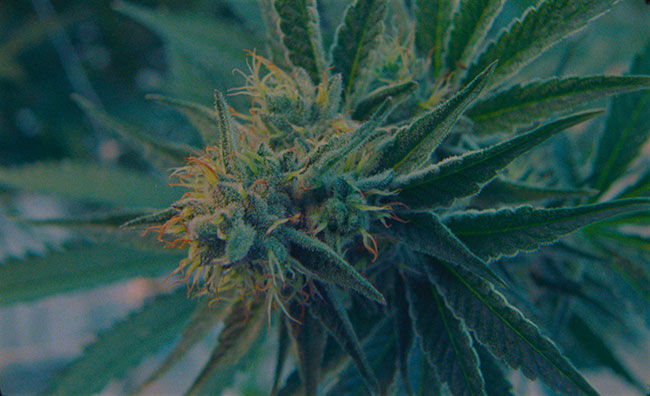I started at this location in 2008 working for Village Farms International growing produce. Prior to that I worked at some other greenhouses, so I’ve been in the greenhouse industry since 2000. I studied a greenhouse management course. At the time, greenhouses were expanding rapidly in the late 90s and early 2000s; the vegetable industry really picked up here in Delta, British Columbia. Today at Pure Sunfarms, we’re currently cultivating in 1.65 million square-feet of greenhouse space.
The real advantage of growing in a greenhouse in B.C. is that even though it appears that it’s raining here all the time, the absolute humidity is actually very low. You can see that from the types of plants we have – like pine trees and spruce – that are drought tolerant. Generally, the air is very dry in B.C. We can keep the rain out and use the dry air to make the greenhouse air optimal for the plants. The fact that it rains a lot here is a benefit because we’re able to collect all that rainwater to feed the plants. We collect the runoff from plants so we’re not losing the fertilizers into the environment – they’re just going back into our plants.
The other benefit to growing in a greenhouse is that a lot of the wind that comes off the ocean in the summertime has a cooling effect, so the coastal climate doesn’t have as many extremes. The supplemental light we use is for the winter, especially in flower when the plants require more energy. Once you get to May, it’s not really worth it to run the lights, because you’ll get enough sunny days in between the cloudy days.
The importance of continued experimentation
Understanding what quality you’re trying to achieve is critical. The team is very important, as is learning through experimentation. We’re not solely using mechanics to make the climate inside. We depend on the air outside a lot. We don’t have air conditioners in the greenhouse; we’re trying to use the energy from the sun as well as the air outside and the physics of the greenhouse to make the climate inside. There’s also a local climate benefit. The wind coming off the ocean tends to blow the clouds away quickly, so we have a lot more sunlight hours in this area.
Advertisement
We’re constantly experimenting. Sometimes I run mini experiments because I want to see the limitations. I have to understand the limitations and the problems, and what caused them – pushing the boundaries of what’s possible to make continuous improvements. That gives us the parameters we need to be within. From those learnings, scaling up is easily done.
Research, development and innovation
We innovate in other ways as well. We have research partnerships with Simon Fraser University (SFU) and Langara College, and a lot of those experiments, they run them, and our teams direct them.
The experiments help with innovation and problem solving. With SFU, the kinds of innovation we collaborate on are more plant-related: disease management, IPM, and water sterilization. Unlike gardening, in farming you’re often battling bacteria, fungi, viroids and viruses, so you have to build a way that you’re protected from that into your system. With Langara, the work we do is more on the secondary side, like figuring out procedures and optimizing our product and manufacturing processes.
When thinking about AI as a tool for innovation, I’m interested in reaction time; the reaction time to the changing environment outside. This high-tech greenhouse is fully controlled by a climate system. Our expertise is setting the optimal parameters, which are constantly adjusted, especially when transitioning seasons. So, in using AI, I’m most interested in speeding up reaction times to maintain the optimal climate.
Advertisement
As far as choosing new cultivars, we have a system. What I learned during my time in produce is how to best run our climate and our system; the cultivar has to work within that system. We don’t try to change the system to make the cultivar work in it. Overall, we’re phenohunting in the greenhouse, trialing as many different cultivars as possible, and then we look at how it fits in our system, all the way to processing. It has to work in our climate, and it’s got to meet the consumer’s quality expectations.
We’re fortunate that we have an in-house lab that we can use to test all aspects of what we do, including trialing new products. I think this year we’ve already grown 1,000 different cultivars. Each pheno is different, and we have this ability to quickly assess them through trial. That’s something I’ve never been able to accomplish in produce previously.
At the end of the day to achieve brand loyalty, we need consistent great quality. And that’s our job, from farm to shelf, starting with cultivation.
VP of cultivation and operations, Rob Baldwin grows high quality plants with a passionate team of growers. He is responsible for all aspects of Pure Sunfarms’ cultivation and greenhouse operations, and continues to showcase world-class growing capabilities.
Advertisement

